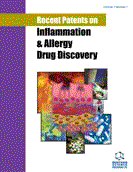Abstract
Asthma is the most common pulmonary disease in children worldwide. As its prevalence significantly increases from 30% to 50% every 10 years it seems that finding the exact form of treatment is crucial to achieve a longterm- benefit effect. Sometimes it appears hard, especially in case of difficult and severe asthma when a standard therapy is not sufficient. The success of omalizumab inspired further studies which turned the spotlight on other pro-inflammatory cytokines such as TNF-α. After the success of anti-TNF-α therapy in many other inflammatory diseases such as for instance Crohns Disease and Rheumatoid Arthritis, there appeared several trials discussing the usage of anti-TNF agents in asthma. The first wave of enthusiasm over positive results in treating asthma patients was blunted by other researches which challenged the benefit of anti-TNF- α in asthma. What is more, they warned about serious problems and adverse events related to that kind of treatment. These results hindered further investigation, especially in case of childrens population, because of the ambiguity as far as the risks and benefits of the treatment were concerned. Nevertheless, the research on anti-TNF-α and asthma underlined a significant polymorphism in asthma phenotypes. It seems likely that a therapy with anti-TNF-α should be limited to a small subgroup of patients with a specific phenotype manifested by an increased TNF axis. The purpose of this review article is to discuss some recent patents in anti-TNF- α therapy.
Keywords: Asthma, bronchial hyperresponsiveness, anti-TNF-α, children, benefit/risk ratio
 9
9


















